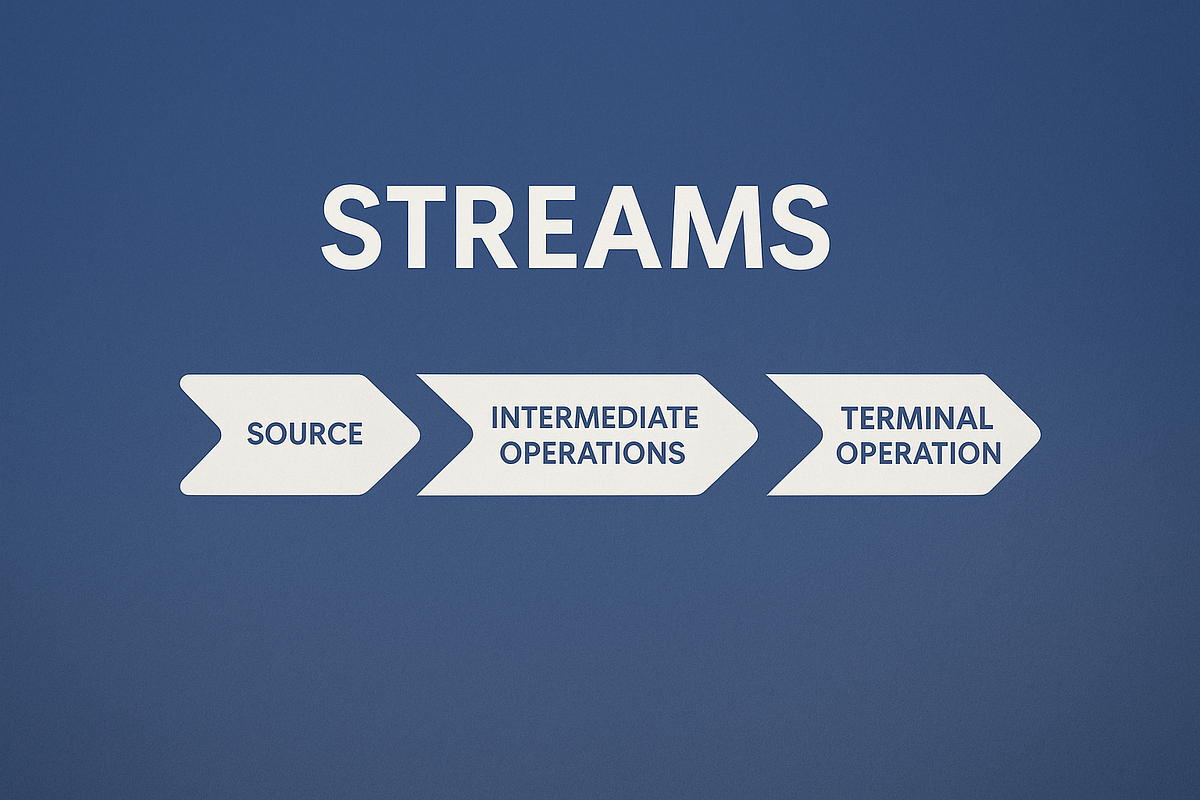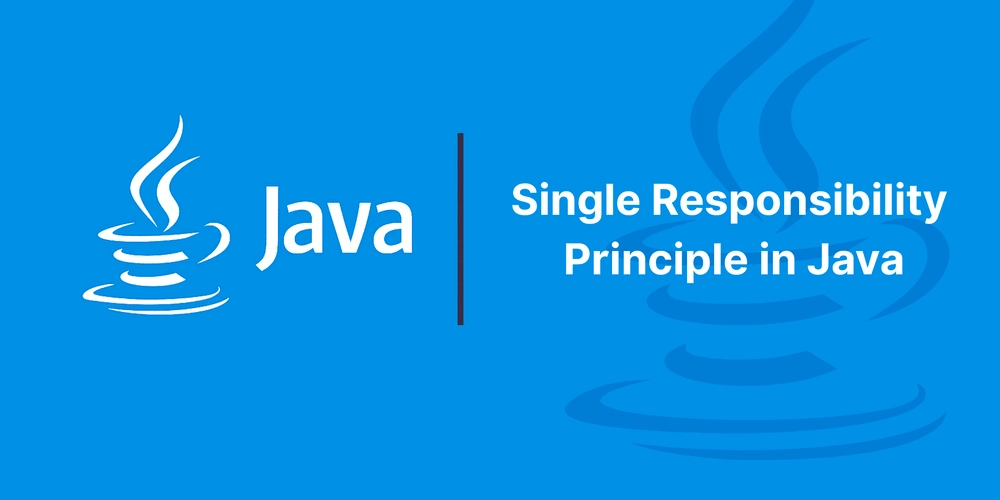Java
Medium
256

Image Credit: Medium
Custom Exceptions in Java: The Hidden Power You’re Not Using
- Custom exceptions in Java allow developers to define errors specific to their domain, improving code readability and debugging.
- Creating custom exceptions in Java involves extending either Exception for checked exceptions or RuntimeException for unchecked exceptions.
- Checked exceptions are ideal for recoverable errors, while unchecked exceptions are useful for programming errors that shouldn't be caught.
- Custom exceptions help in providing meaningful context and specific error handling, making code more expressive and robust.
Read Full Article
15 Likes
Medium
341

Image Credit: Medium
Demystifying Java Streams: A Beginner-to-Intermediate Guide with Real-Life Tasks
- A Stream in Java is a sequence of elements supporting functional-style operations, not a data structure.
- Streams reduce boilerplate, encourage readable, functional code, and work beautifully with functional interfaces in java.util.function.
- Stream operations consist of stages: data source, transformation without consumption, and terminal operation.
- Java Streams empower developers to write shorter, cleaner, safer, and faster code through declarative thinking.
Read Full Article
20 Likes
Dev
13

Image Credit: Dev
Single Responsibility Principle in Java
- The Single Responsibility Principle (SRP) states that a class should have only one reason to change in Java.
- A class violating SRP encapsulates multiple responsibilities which can lead to maintenance and testability issues.
- Identifying separate responsibilities in a class and refactoring them into independent classes can improve maintainability and testability.
- Applying SRP in Java helps in clean and robust code organization within classes, leading to easier changes and better understanding of code.
Read Full Article
Like
Dev
328

Image Credit: Dev
Building Better Interfaces: My Journey from "Functional" to Polished UI in Java Swing
- Alireza Minagar, a software engineer, shares his journey of transitioning from focusing on functional aspects to creating polished UI in Java Swing while working on SecureFleet, a desktop vehicle monitoring tool.
- Implemented features include a structured layout using BorderLayout, GridLayout, nested JPanels, a scrollable JTable with real-world vehicle tracking columns, a dedicated alert button, and functional buttons for tracking vehicles, adding entries, and accessing admin panel with clear color contrast and alignment.
- Key takeaways include the importance of LayoutManagers for organizing components, grouping components into logical panels for alignment and code readability, and the manual refinement that sets interfaces apart.
- The significance of well-designed interfaces in improving user experience, reducing errors, enhancing efficiency, and instilling user trust is highlighted. Future plans for SecureFleet include database connectivity, search filtering, authentication features, and cloud-syncing support.
Read Full Article
19 Likes
Discover more
Dev
17

Image Credit: Dev
Top AI Tools and Libraries for Java Developers in 2025
- AI is transforming software development by offering tools and libraries for various applications, including machine learning and natural language processing, in the Java ecosystem.
- Deeplearning4j is a powerful deep learning library on JVM, providing scalability and integration with big data frameworks like Hadoop and Apache Spark for solving complex problems.
- Keploy is an API testing platform for creating test cases and data mocks from API calls, useful for testing AI models and ensuring consistent behavior.
- Apache OpenNLP is a Java library for natural language processing, aiding in text analysis and classification tasks.
- Weka is a popular machine learning and data mining tool for various tasks like data preprocessing, visualization, and API integration.
- Spring AI simplifies AI application development in Java by offering tools for integrating AI functionalities like chat models and text-to-image generation with ease.
- GitHub Copilot is an AI coding assistant that generates code suggestions and test cases, improving development efficiency and code quality.
- Tabnine is an AI-powered code completion tool that predicts and suggests code snippets while typing, enhancing productivity and focusing on problem-solving in Java development.
- Java's suitability for AI development lies in its robustness, platform independence, community support, and availability of libraries and frameworks tailored for AI projects.
- The future of AI in Java looks promising with advancements in libraries like Deeplearning4j and improved integration with machine learning frameworks, paving the way for smarter applications.
Read Full Article
1 Like
Dev
400

Image Credit: Dev
NumberGuessingGame with springBoot and java
- A Number Guessing Game was implemented in Java using Scanner and Random classes.
- The game randomly selects a number between 1 and 100 for the user to guess.
- The implementation involves user input, comparison with the generated number, and congratulatory message on successful guess.
- Another version of the game was developed using Spring Boot with controllers and templates for a web interface.
Read Full Article
24 Likes
Javacodegeeks
432

Image Credit: Javacodegeeks
Running Java Apps on AWS Lambda with SnapStart: Is It Production-Ready Yet?
- AWS Lambda SnapStart is a feature designed to improve cold start performance for Java applications on AWS Lambda by pre-initializing and snapshotting the runtime state.
- SnapStart works by taking a snapshot of the Java runtime after initialization and restores this state for faster subsequent invocations, reducing cold start times by up to 10x.
- Enabling SnapStart on Java 11 or Java 17 functions in AWS Lambda can significantly reduce cold start times, making it suitable for production-level Spring Boot applications.
- Although SnapStart cuts cold start times by 90%, it is best suited for Spring Boot 3.x and may not be fully compatible with all AWS services yet, such as Provisioned Concurrency or Lambdas behind Elastic Load Balancer.
- SnapStart is recommended for APIs with unpredictable traffic, event-driven workloads, and latency-sensitive features, but caution is advised for dynamic init logic or unsupported runtimes.
- The article provides a ready-to-use project structure for a Spring Boot 3 + AWS Lambda SnapStart example, emphasizing proper setup and considerations to ensure successful deployment.
- SnapStart is considered production-ready for Spring Boot applications if used cautiously, offering a significant reduction in cold start latency, but users must be mindful of potential limitations and compatibility issues.
- Utilizing SnapStart can bring down cold start latency for Java Lambdas with Spring Boot and is recommended for most real-world applications, but users should handle it as a powerful tool to avoid unintended bugs.
- Further resources provided include AWS SnapStart Documentation, Spring Cloud Function + AWS Lambda Guide, Micronaut SnapStart Example, and Java Lambda Best Practices for additional insights and best practices.
Read Full Article
26 Likes
Dev
31

Image Credit: Dev
Brain4j: Wait, Java Finally Has a Brain?
- Brain4j is an open-source machine learning framework for Java developers, offering neural networks, classic ML algorithms, NLP tools, GPU acceleration, and enterprise-ready features.
- Real-world uses of Brain4j include predictive analytics, computer vision, and fraud detection, making it functional for various applications.
- Getting started with Brain4j involves adding dependencies, building neural networks, and utilizing its unique features like GPU acceleration.
- Pros of Brain4j include no Python bridges, lightweight nature, and open-source availability, while cons include limited community support and potential challenges compared to TensorFlow in the AI field.
Read Full Article
1 Like
Arxiv
427

Image Credit: Arxiv
Are Sparse Autoencoders Useful for Java Function Bug Detection?
- Sparse Autoencoders (SAEs) are explored as a lightweight, interpretable alternative for bug detection in Java functions to address software vulnerabilities such as buffer overflows and SQL injections.
- SAEs are proposed as a solution to the challenges posed by the complexity and opacity of Large Language Models (LLMs) in vulnerability detection and secure code generation.
- Evaluation shows that SAE-derived features enable bug detection with an F1 score of up to 89%, outperforming fine-tuned transformer encoder baselines.
- This study provides empirical evidence that SAEs can detect software bugs directly from the internal representations of pretrained LLMs without requiring fine-tuning or task-specific supervision.
Read Full Article
25 Likes
Medium
245
Image Credit: Medium
Java’s Concealed Weaknesses: Insights from a Seasoned Coder
- Java, a popular and widely-used programming language, has hidden drawbacks that may surprise developers.
- Despite its power and reliability, Java has some weaknesses that can slow down developers, as highlighted by a seasoned coder.
- While Java taught object-oriented programming and provided a structured foundation, its limitations became apparent as the coder explored other languages.
- This blog offers honest insights into the concealed weaknesses of Java, providing valuable perspectives for both experienced and upcoming Java developers.
Read Full Article
14 Likes
Javacodegeeks
405

Image Credit: Javacodegeeks
Running Java Programs in the Background
- Running a Java program in the background is essential for maintaining applications or services active even after terminal sessions end.
- To run a Java program in the background, various methods like using '&', redirecting output, using nohup, screen sessions, tmux sessions, or shell scripts can be utilized.
- Creating a simple Java application using Jetty Embedded and building it into an executable JAR file is a starting point.
- Running a Java program in the background using '&' and redirecting output to log files is effective for lightweight applications or during development.
- Using 'nohup' command allows running processes in the background even after closing the terminal session, which is useful for long-running applications.
- Using 'screen' and 'tmux' sessions provides a way to create detachable terminals for managing long-lived processes interactively.
- Creating a shell script to start a Java program in the background automates the launch process, but it may not be ideal for production environments due to limited error handling.
- Stopping the background Java process can be done by identifying the process ID (PID) using 'jps' command and terminating it with a kill command.
- Ensuring resources are released properly and avoiding leaving orphaned processes running is important when managing background Java processes.
- In conclusion, utilizing tools like output redirection, nohup, screen sessions, or tmux can help in running Java programs effectively in the background on Unix-based systems.
Read Full Article
24 Likes
Dev
333

Image Credit: Dev
How to Read Data from Redis Slave Nodes Using Java?
- Reading data from slave nodes in Redis is crucial for building scalable applications to offload read operations, enhance performance, and ensure high availability.
- Redis follows a master-slave architecture where the master node handles write operations, while slave nodes replicate data from the master to handle read requests, improving load balancing and redundancy.
- Using slave nodes in Redis offers benefits such as improved read performance, high availability in case of master failure, and data redundancy for safety against data loss.
- To read data from Redis slave nodes using Java, you need to set up a Redis server with master and slave nodes, use the Jedis library, and create a Jedis instance to connect to the slave node and fetch data efficiently.
Read Full Article
20 Likes
Dev
180

Image Credit: Dev
Remove Vowel-java,PasswordValidator,Regex,Password Valitation
- Removed vowels from the given word, displaying the remaining characters.
- Found vowels in the given word and displayed them.
- Validated a password by checking if it contained uppercase, lowercase, numbers, and special characters.
- Explained the regex pattern for validating a string starting with PR followed by exactly 6 digits.
Read Full Article
10 Likes
Javacodegeeks
387

Image Credit: Javacodegeeks
Introduction to Apache Beam Using Java: A Beginner-Friendly Guide to Unified Data Processing
- Apache Beam is an open-source, unified model for defining both batch and streaming data-parallel processing pipelines, allowing developers to write jobs that can run on various execution engines.
- Apache Beam provides a high-level programming model with a unified API for batch and streaming, portability across multiple runners, and support for windowing, event time, triggers, and watermarks.
- Java is the primary SDK for Apache Beam, offering mature API, better performance tuning options, wide usage in enterprise systems, and compatibility with Maven and Gradle for dependency management.
- Apache Beam's unified API allows developers to define pipelines that can be configured for either batch or streaming at runtime, making it versatile for processing both bounded and unbounded datasets.
Read Full Article
23 Likes
Dev
441

Image Credit: Dev
Say No to Lombok: Embrace MapStruct + Java Records for Clean, Modern Java
- Lombok has been a popular tool for eliminating boilerplate code in Java development but comes with disadvantages like IDE confusion and hidden complexity.
- Java Records and MapStruct offer a better alternative for clean mapping and type safety in Spring Boot applications, promoting immutability and clear code structure.
- Java Records are immutable by default and come with a concise syntax, while MapStruct simplifies object mapping between different types with compile-time checks and integration with Spring Boot.
- Using MapStruct + Java Records simplifies DTO mapping, enhances code clarity, and reduces bugs caused by unintended mutations, making it a preferred choice for modern Java development.
Read Full Article
26 Likes
For uninterrupted reading, download the app